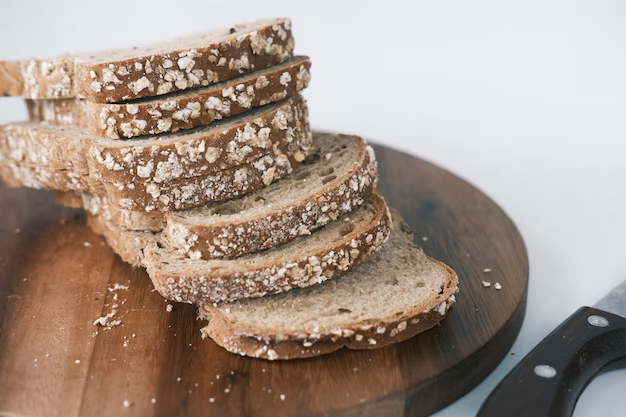Can Diabetics Enjoy Rye Bread Without Worry?
When managing diabetes, food choices can make a significant difference in maintaining healthy blood sugar levels. Among various diet decisions, selecting the right type of bread is pivotal. So, where does rye bread stand in a diabetic's diet? Is this dense, flavorful bread a wise option or one best avoided?
Health Benefits of Rye Bread for Diabetics
Rich in Fiber: Rye bread is packed with dietary fiber, which can slow down digestion and the absorption of carbohydrates. This property helps prevent spikes in blood sugar levels. The fiber content contributes to a slower release of glucose into the bloodstream, making rye bread a particularly beneficial choice for diabetics.
Lower Glycemic Index: Rye bread generally has a lower glycemic index (GI) compared to white bread. The GI is a measure of how quickly a food causes blood sugar to rise. A lower GI means a slower rate of blood glucose increase, which is conducive for individuals managing diabetes.
Heart Health: Whole grain rye bread is linked to improved heart health due to its high fiber content and beneficial bioactive compounds. It may aid in reducing cholesterol levels, which is an added benefit for diabetics who are often at a higher risk for cardiovascular diseases.
Considerations When Choosing Rye Bread
Check the Ingredients: Not all rye breads are created equal. Many store-bought versions are made with refined flour or mixed with a significant portion of wheat flour, reducing their nutritional benefit. For the best health outcomes, opt for 100% whole-grain rye bread.
Watch for Carbs: While rye bread offers benefits, it is still a source of carbohydrates. Portion control is key. Monitoring your overall carbohydrate intake is essential to maintain stable blood sugar levels.
Personal Blood Sugar Response: Everyone's body reacts differently. It's important to monitor your own blood glucose response to rye bread and adjust portion sizes accordingly. Keeping a food journal can be a useful tool to track how different foods, including rye bread, affect you personally.
Beyond the Bread: Exploring Financial and Educational Resources
Managing diabetes can be costly, from dietary needs to medical costs. Fortunately, there are government aid programs and financial assistance options that can alleviate some burdens:
Government Health Programs: Many countries offer subsidized healthcare options that cover costs related to diabetes management. Contacting local health services can provide guidance on available programs.
Low-Income Food Assistance: Programs such as SNAP (Supplemental Nutrition Assistance Program) in the United States can help cover food expenses, ensuring access to nutritious foods necessary for a diabetic diet.
Educational Grants and Resources: For those balancing diabetes management with education, numerous scholarships and grants are available. These can provide financial support for tuition and health-related educational expenses.
Debt Relief Solutions: Organizations offer debt management and relief advice to help diabetes patients free up financial resources necessary for their care.
Credit Counseling Services: Credit counselors can offer personalized advice on managing debt and expenses related to diabetes treatment, creating a more sustainable financial environment.
Quick Reference: Financial Assistance Programs 💰
- 🎓 Educational Grants: Pell Grants, state-specific scholarships
- 🏥 Healthcare Subsidies: Medicaid, Medicare options
- 🍎 Food Assistance: SNAP benefits, WIC program
- 💼 Debt Relief: Non-profit credit counseling
- 📞 Financial Advice Hotlines: National Foundation for Credit Counseling (NFCC)
Choosing rye bread as part of a balanced diet can be a smart move for diabetics when paired with diligent financial planning. By leveraging available resources, managing diabetes becomes a more sustainable and less stressful journey.
